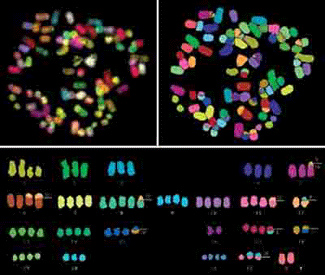A new type of colorectal cancer has been defined

Researchers at the UAB have undertaken the EPICOLON project, in which they analysed 2,000 patients with colorectal cancers diagnosed over the year in 25 hospitals throughout Spain. As a result of this work they have defined hereditary syndrome clearly differentiated from hereditary nonpolyposis colorectal cancer (HNPCC) in which the gene or genes responsible are still unknown.
Up to now it has been believed that there were two main hereditary colorectal cancer syndromes: familial adenomatous polyposis (FAP) the syndrome hereditary nonpolyposis colorectal cancer (HNPCC). The former is due to inherited mutations of the gene APC and the latter due to mutations of genes in charge of repairing errors which are produced in the process of cell division, when the various bases (Adenine, Guanine, Thymine, Cytosine) which make up the DNA chain have to link up correctly.
The syndrome of hereditary nonpolypolosis colorectal cancer (HNPCC) or Lynch syndrome is the most common form of hereditary colorectal cancer. It represents around 2% of all cancers colorectal. While, as has been mentioned, this syndrome seems to be due to mutations in the repairer genes of DNA, it has also been noticed that a significant number of these tumours do not show the molecular characteristics which are typically associated with these mutations: the instability of microsatellites (alteration in the size of regions that are present all along the genome based on repetitions, usually one or two nucleic acids). The impact of these tumours in the HNPCC syndrome has never been determined, however, in a population based study and very little was known about the potential differential characteristics of these tumours.
With the aim of addressing these and other issues connected with this syndrome, the EPICOLON project was developed. This was a prospective population based study which included all the colorectal cancers diagnosed over one year in 25 Spanish hospitals. We included demographic clinical and pathological data as well as a detailed familiar history. Tumour tissue was also collected to carry out molecular tests.
Some 2000 patients were included in the study. In 1309 cases we had complete data and DNA. 25 patients showed clinical criteria of the HNPCC syndrome but only 40% of these showed typical molecular alterations associated with mutations to repairer genes. The other 60% did not show signs of these alterations. Comparing the two groups, we could see clear differences that showed that the group without mutations was quite different from the group showing a classical HNPCC syndrome. This different group showed a pattern of dominant autosomic inheritance but with less penetration than in the classical case, cancers appeared at a later age, mainly appeared in the distal part of the colon and did not show tumour alterations usually associated with the classical syndrome such as lymphocytic infiltration. We have therefore defined a hereditary syndrome clearly differentiated from HNPCC. In addition at present, we still do not know the gene or genes responsible for HNPCC.

Example of a family tree of a family affected by HNPCC or Lynch syndrome.
References
Article: "Differential features of colorectal cancers fulfilling Amsterdam criteria without involvement of the mutator pathway" Llor, X; Pons, E; Xicola, RM; Castells, A; Alenda, C; Pinol, V; Andreu, M; Castellvi-Bel, S; Paya, A; Jover, R; Bessa, X; Giros, A; Roca, A; Gassull, MA; Gastrointestinal Oncology Grp. CLINICAL CANCER RESEARCH, 11 (20): 7304-7310 OCT 15 2005


